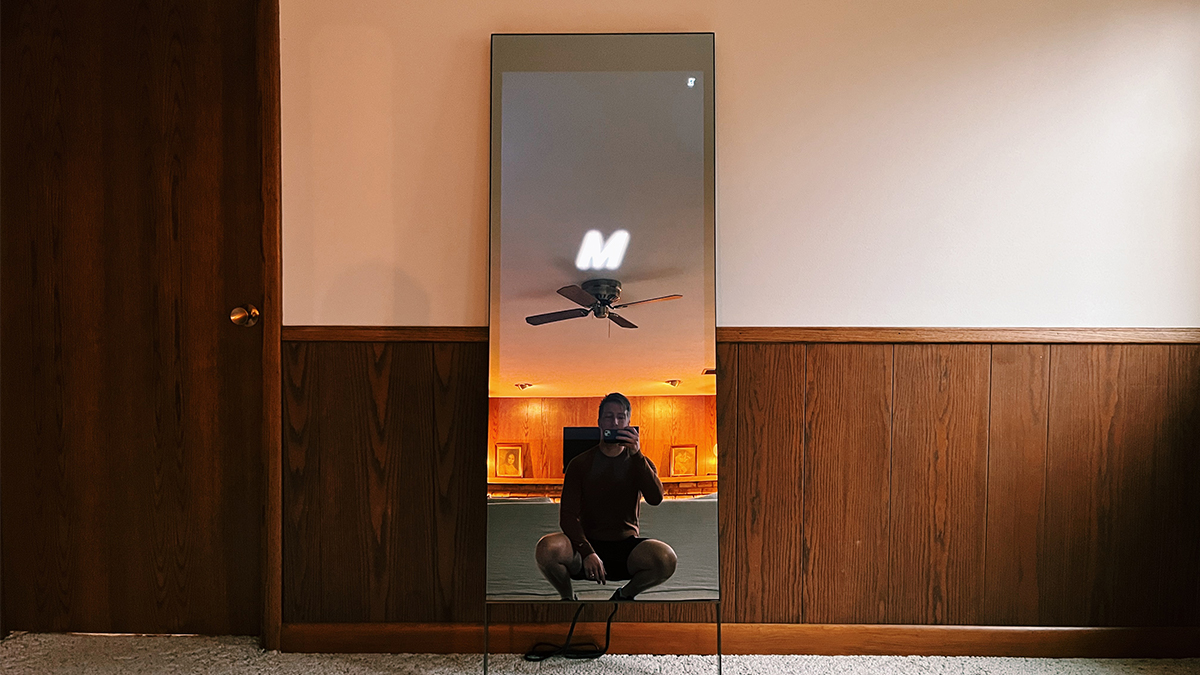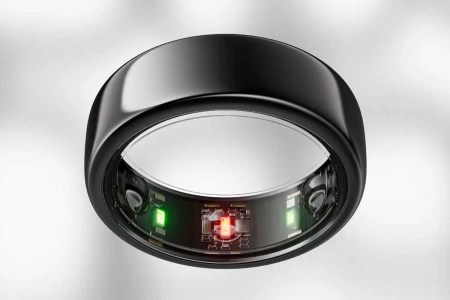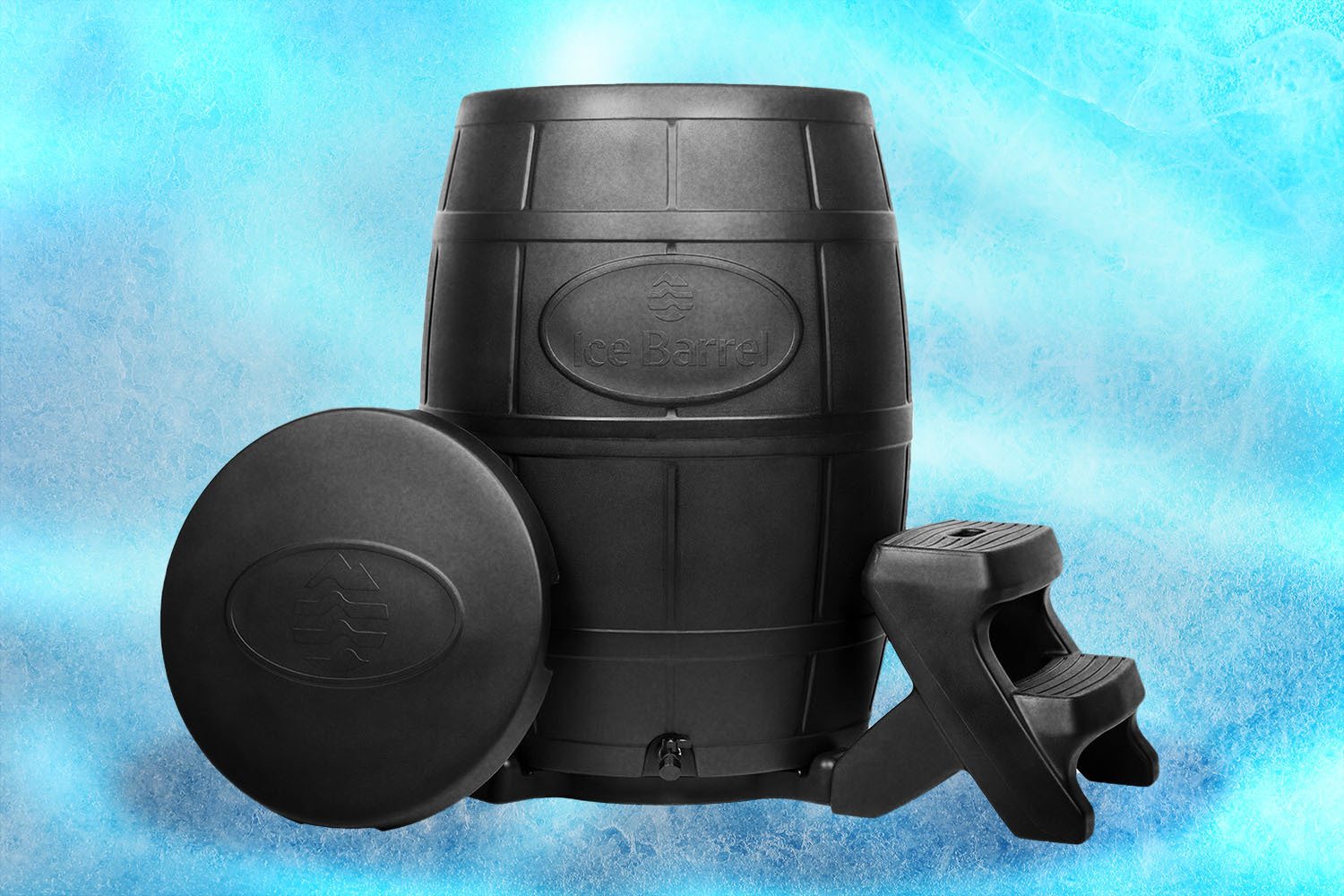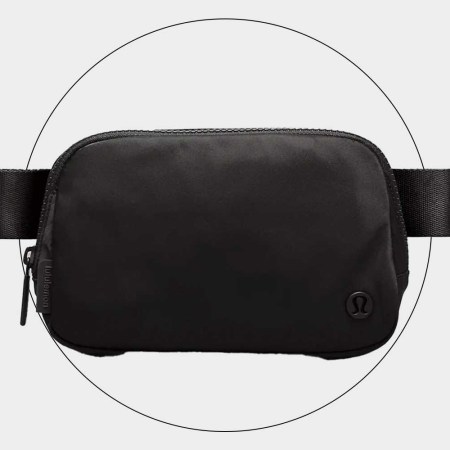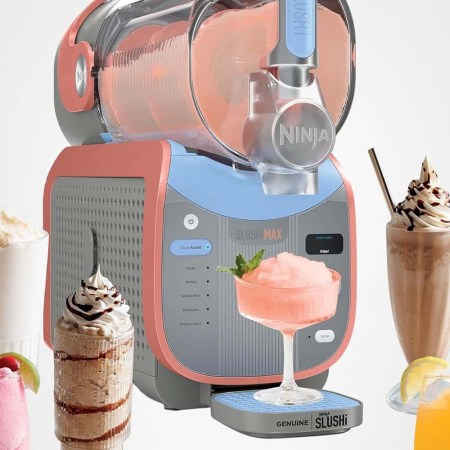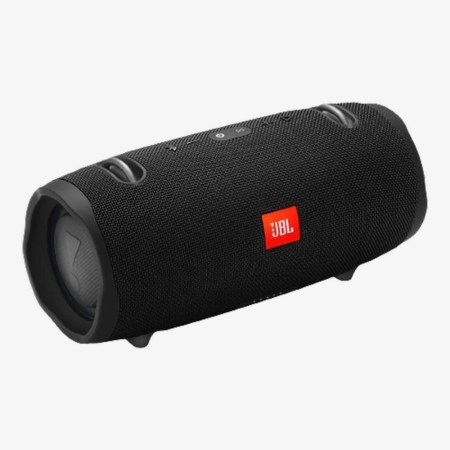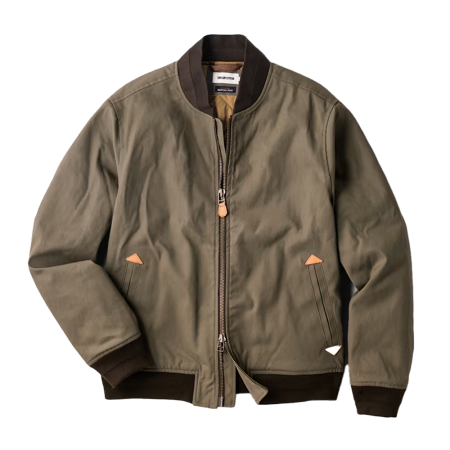Nota bene: All products in this article are independently selected and vetted by InsideHook editors. If you buy something, we may earn an affiliate commission.
We first published this review of the Mirror in April 2022. Since that time, the home fitness device — whose parent company was bought by Lululemon in June 2020 — has seen a number of significant changes, including in name: it is now the Lululemon Studio Mirror. This is part of the athleisure brand’s introduction and focus on the Lululemon Studio program, a monthly paid membership that offers access to classes on the Mirror device or an app, as well as a number of other perks, including discounts on gear.
The Mirror device, however, has stayed pretty much the same. As such, we’ve kept this review mostly in its original form, but updated naming, pricing and other relevant details throughout. The most significant change? While the monthly membership is the same price ($39 per month), the Mirror is significantly less, now starting at $995 instead of $1,495. Does that mean it’s right for you? Read on to find out.
Sometimes I wonder why the Samsung Frame hasn’t swept the nation. You know The Frame, the TV that you don’t realize is a TV because you can display art on it when it’s not in use. Isn’t that such a subtly brilliant idea? I think so. The problem is, most people have come to accept that TVs are the focal point in living rooms (and, unfortunately, many other rooms). So hiding them doesn’t feel like a priority.
Mirror, the home fitness company that became a sensation (and Lululemon entity) during the pandemic, has adopted the same ethos as The Frame, but it’s solving an actual problem. Among those who want to work out at home, most of us don’t want to give up a room for our equipment, so we put treadmills in the basement, hang up punching bags in the garage and stick pull-up bars in the least intrusive door frame. Even Peloton, whose signature bike is as much a status symbol as a sweat machine, can’t be the centerpiece of your decor. Sure, it’s fine in the living room during the day, but when you have a party? You’ll find yourself looking for a big enough closet to stash it in.
You won’t have that problem with the Lululemon Studio Mirror, which I’ve been testing for the last six weeks. While other high-tech home fitness machines are space sucks, the 56-inch-tall Mirror device looks like a real mirror when it’s mounted on your wall. (If you want to lean it up against a wall rather than attach it, you can use a sleek stand as I did, which increases the height to 65 inches.) Not too futuristic-looking, it is instead a sort of neutral object that won’t look out of place whether you adhere to a minimalist aesthetic or put it in your wood-paneled, ‘60s-era basement (again, like me).
Review: Why the Oura Smart Ring Gen3 Is Our Sleep Tracker of Choice
What to know about one of Silicon Valley’s favorite gadgetsThat subtly brilliant packaging — putting a fitness studio where trainers teach you classes into a mirror — is a reason to buy this machine, and a huge reason why it exploded in popularity during the first year of the pandemic. But as we saw, not all WFH-era purchases have legs. Many home fitness brands are desperately trying to hang on as people go back to gyms again.
Herein lies the even more important ingenious part of the Mirror: Most other home gym contraptions, even the devices we here at InsideHook love, have moving parts. “The Peloton of climbing,” “the Peloton of rowing” and “the Peloton of punching bags,” all of these machines, like all of the machines of yore (air bikes, treadmills, cable machines), have moving pieces that can break. And what happens when they break? As many Americans can attest to, these machines are more likely to be forgotten, to gather dust in the garage or basement, than to be fixed. With the Mirror, you don’t have to worry about normal maintenance or repairs, and you don’t have to worry about where to store it, because it’s basically just a big screen.
It’s also much more than just a big screen, as I found out during testing.
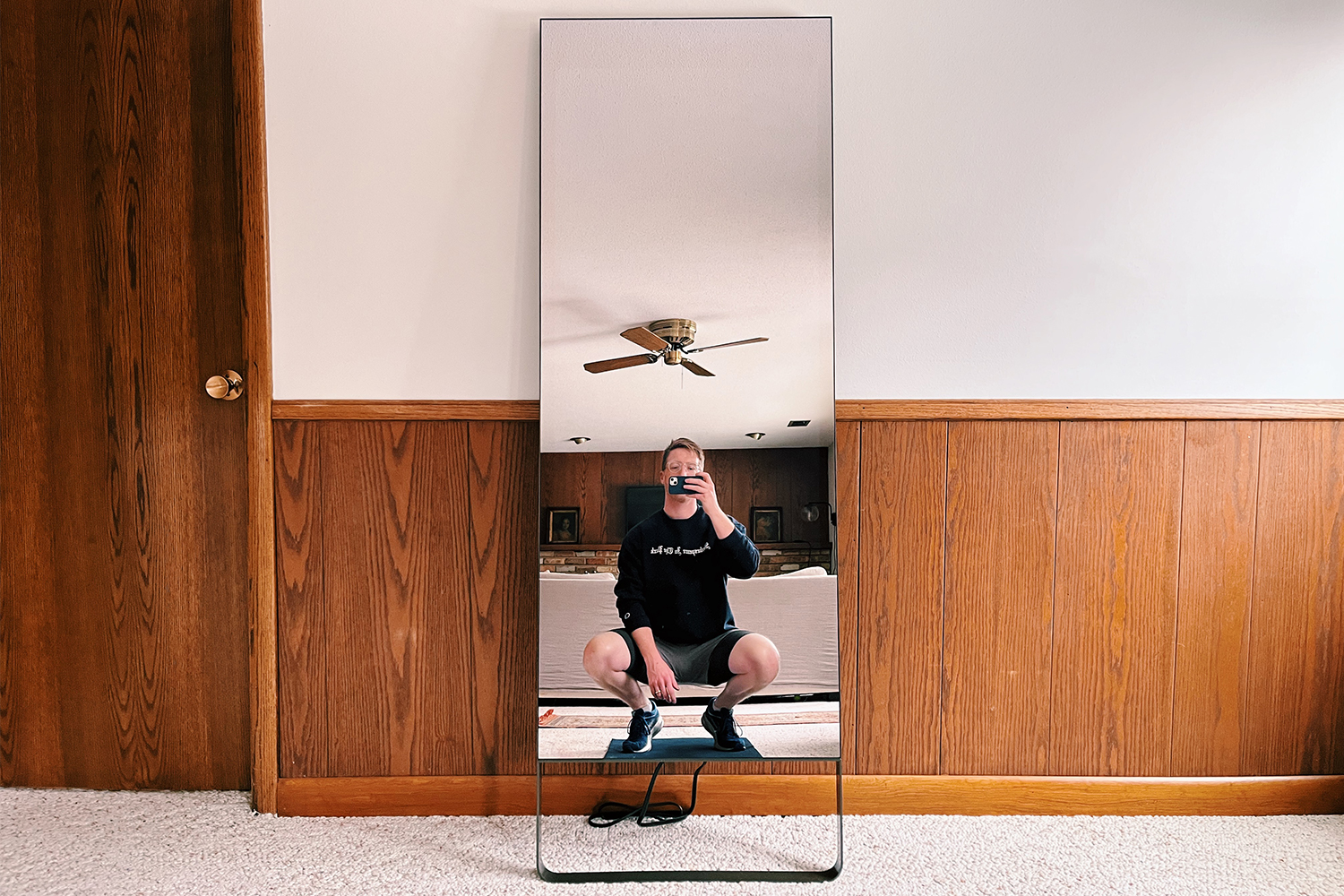
Using the Lululemon Studio Mirror at Home
The Mirror currently starts at $995 for the device (which includes the stand, a privacy lens cap for the front-facing camera and a one-year warranty), and goes up to $1,450.95 if you bundle it with other goodies, such as Lululemon yoga mats, yoga blocks, heart-rate monitors and smart dumbbells.
The huge upside to their pricing structure used to be that the company offered free delivery and installation, but now delivery to your door is free while installation costs an additional $250 (since the base price for the device used to be $1,495, you could convince yourself it’s still a deal with installation). I didn’t have the installers attach the device to my wall, because I’m returning it, but I suggest you find a permanent home beforehand and have them affix it rather than trying to do that yourself. The downside to the pricing is that you must also subscribe to a Lululemon Studio All-Access Membership, which is currently $39 per month and requires a one-year commitment — and $468 a year is a significant investment. However, while many have decried the high price of the Mirror, it’s significantly less than similar competitors: the Tempo Studio costs $1,695 for the device (which includes weights) plus $39 a month for access to content; Tonal, a wall-mounted device with two cable arms, starts at $3,995 plus $60 a month for a membership.
Now, the Mirror by itself offers a stripped down experience compared to those two devices, and many other home fitness machines. It’s basically a big screen, and not even a touchscreen at that. (To control the Mirror, you need to download the Lululemon Studio on your phone and use that as a remote of sorts. You’ll also need a strong wifi connection.) What makes the Mirror marvelous — its simplicity — may also be a mark against it if you’re looking for an intense strength training experience. It thrives in the bodyweight realm, so how much workout diversity can it offer?
As it turns out, a ton. At the moment, Mirror says it has over 10,000 classes across 60 categories available to you at any time. That includes classic strength classes focusing on areas like your abs, butt/legs or total body, as well as activities like boxing, hip hop dance and pilates that are ideal in this situation, where form is key and you can perfect it by seeing the trainer on the screen in front of you as well as yourself reflected on the surface. (This isn’t narcissism, this is about form, potentially the biggest issue people have when working out from home.) They even take it a step beyond that with options you may not find on other machines, but are ideal for people who want the sweat-at-home experience, including pre/postnatal classes and family-friendly sessions that include your kids.
Plus, they also offer a slate of live classes every day (listed in a specific section of the app and marked by a red “LIVE” tag), as well as personal training sessions that start at $40. The latter is a nice option to have for those who think they’ll miss the one-on-one experience.
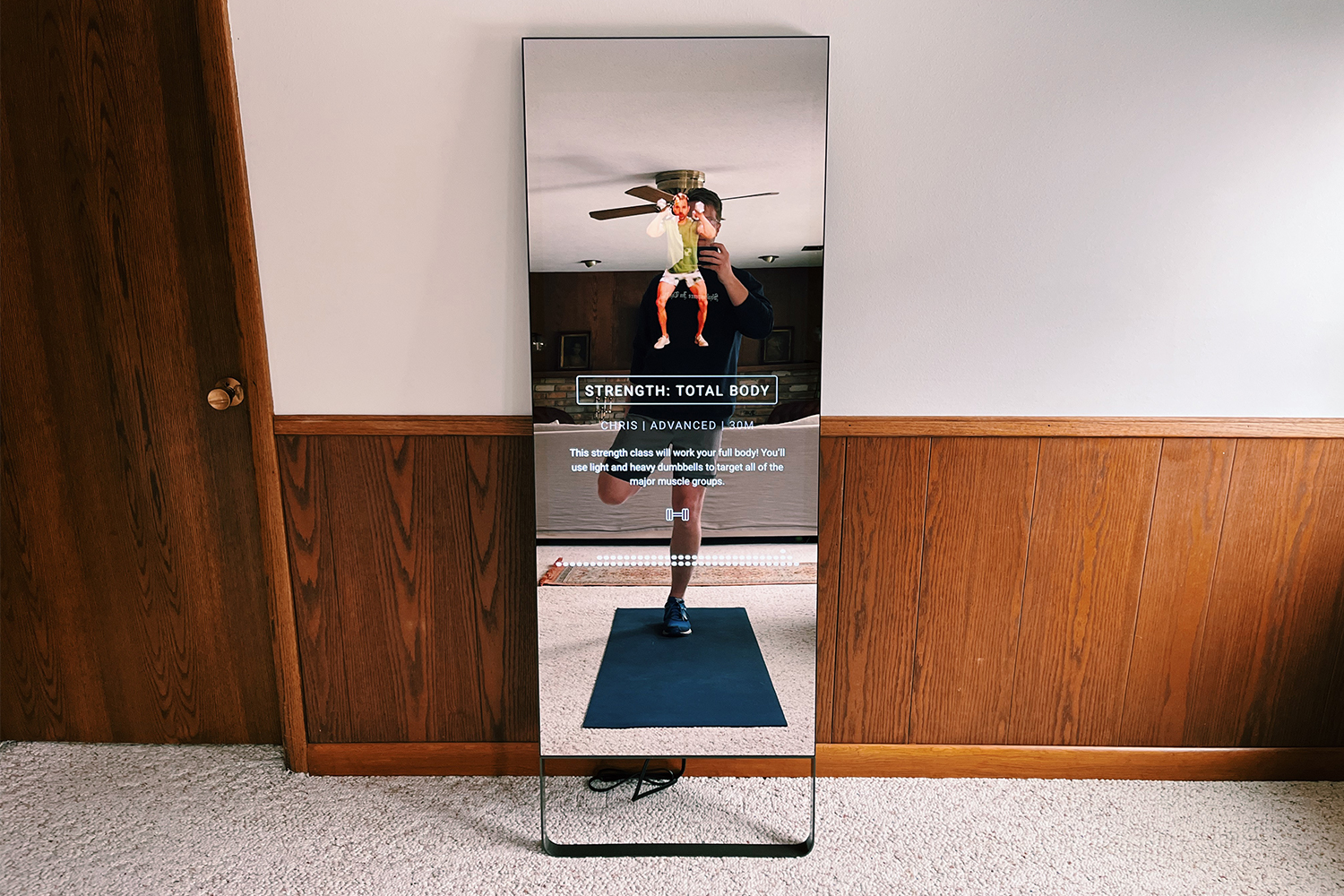
The Pros and Cons of the Lululemon Studio Mirror
The problem I come back to with any home fitness regimen, whether it’s a high-tech screen or a simple weight bench, is accountability. I prefer an in-person training experience with a teacher, trainer or coach, because in that situation I can’t slack off. And if I do slack off, they can hold me accountable. At home, alone, I can always convince myself not to do those burpees.
While the Mirror doesn’t replace that in-your-face experience, through the live classes it does offer a compelling alternative. I could look up which classes were happening the next day, bookmark the ones I wanted to take (which would add them to the front page of my app) and add them to my phone’s calendar (where I could set reminders). Once you’re in a live class, the instructor will sometimes shout out a particular user, and you can see a constant scroll along the bottom of the screen of the other users in the class; if you want, you can turn on your camera at any point, and some people do, so their floating bubble on the bottom shows them working out in their home. This is a poor replacement for the camaraderie I’ve experienced at cycling studios and HIIT classes, but for an at-home experience, coming from someone who works from home, these live classes were significantly more satisfying than expected.
Another element that seems to get lost in discussions of high-tech workout equipment is the importance of the trainers themselves. Well, OK, even before that And Just Like That… episode we knew people were becoming infatuated with their Peloton trainers, but if we remove the sexual quotient for just a minute, these digital gyms live and die by the talent they can stream inside them. And after testing out a number of trainers on the Mirror, the company has clearly not skimped in this department. Personally, I dig Chris Ryan (for his infectious optimism), Hollis Tuttle (for helping my form) and Gerren Liles (for kicking my ass). Some of the trainers have even inspired social-media communities, like @mirrorteam100 for Gerren, if you crave more social interaction with your fitness routine.
The first full Mirror class I took was a 30-minute cardio bootcamp with Gerren. I chose that one because, besides choosing classes by category or through the live schedule, the Lululemon Studio app offers a section called Programs, which recommends a series of classes based on what you want to achieve, such as fat loss or core strength, and Collections, which pulls together various classes under interesting (and consistently updated) banners, such as “Beginner Sweats” and “Mirror’s Toughest Workouts.” I chose the latter, which included 30 minutes of burpee variations with Gerren. If you think you can’t get a real workout with a fitness mirror, I challenge you to try that class (Lululemon offers a 30-day trial for the Mirror).
However, the Mirror experience wasn’t seamless for me. It was plagued by all the normal frustrations that come with digital, wireless, internet-connected tech. One day when I tried to connect to a live workout right after work, my Mirror displayed a loading wheel with the word “Retrying,” as it couldn’t connect to the internet. A quick troubleshoot told me my wifi was weak, but my wireless router was literally two feet away. Then I tried a pre-taped class instead, but the sound didn’t work, and after going through the recommended troubleshooting steps I did what any digital native would do: turned it off and turned it back on. It worked after that, though I did eventually have to re-add my internet.
If you’re worried about buying into a subscription-based fitness machine because of the possibility it will become obsolete, know that Lululemon has big hopes for Mirror’s growth. On an earnings call in December 2021, CEO Calvin McDonald said, “[W]e want everybody sweating on a Mirror to be in Lululemon, and we want everybody sweating with Lululemon to be engaging and using a Mirror.”
Of course, you don’t need to own any Lululemon products to buy this wall-mounted workout mirror. What you do need is a strong wifi connection, a willingness to use your phone every time you exercise and the willpower to take classes often enough to justify the monthly subscription.
We've put in the work researching, reviewing and rounding up all the shirts, jackets, shoes and accessories you'll need this season, whether it's for yourself or for gifting purposes. Sign up here for weekly style inspo direct to your inbox.
